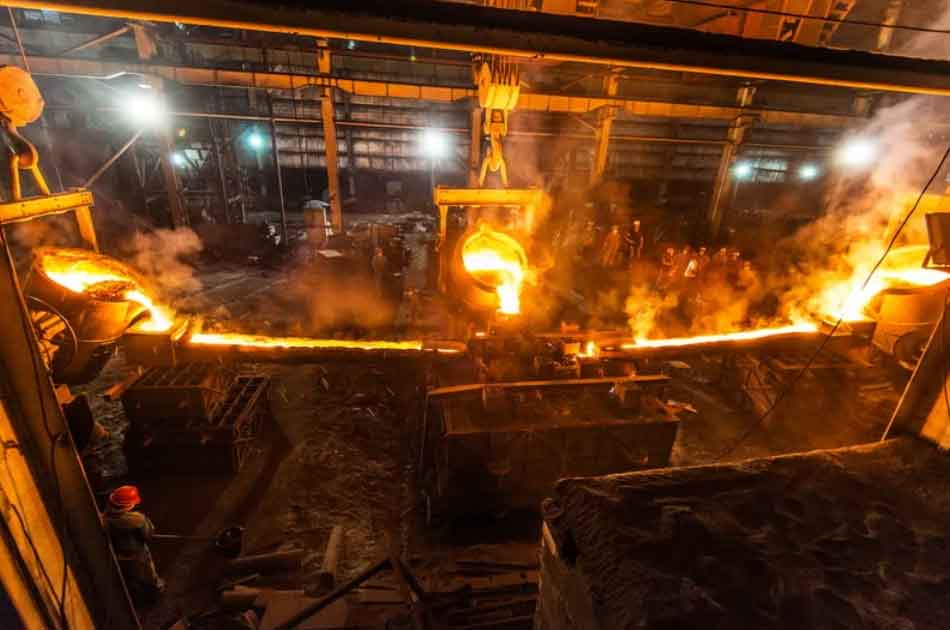
The development of casting steel industry and the improvement of steel-making technology are inseparable. Although the technology of wronght steel made steel components available, it was impossible to manufacture steel casting before mastery of liquid steel-making technology, In the initial stage of liquid steel technology becoming practically, the liquid steel was formed by pouring into sand mould. Though technology applied in the process was very simple, the products were still be considered as steel castings.
The general situation of development of casting steel industry can be divided into the following two phases which are bounded by the 1940s .
The first phase was the emergence of steel and the formation of casting steel industry from 1845 to 1940.It almost experienced 2000 years from the iron age to the liquid steel coming out for the first time. From iron-making to steel-making, though there are only differences on carbon content and melting point, the technology is a big difficulty. The major obstacle is the lack of melting equipments which are high temperature resistance and corresponding refractory materials.
The second phase is the technology progress of the casting steel industry after 1940s.The development of casting steel and alloy materials have advanced studies on alloying and micro alloying. And all kinds of alloy steel and special steel in the casting steel production account for growing proportion which is one of the important technical progress in modern steel casting industry.
And technology progress is also one of the reasons for slowing casting production. The rapid promotion of continuous casting of iron and rolling technology of iron and steel industry is the most typical example which makes the traditional ingot mold decrease significantly.
The development of the casting steel industry has been a crucial aspect of the overall progress in the steel manufacturing sector. Steel casting is a process where liquid steel is poured into a mold to create complex shapes, which are later used in various industries, including automotive, construction, aerospace, and energy.
Here is an overview of the key stages in the development of the casting steel industry:
- Early History: Casting metals has a long history, with evidence of early steel casting dating back thousands of years. In ancient times, various civilizations, including the Chinese and Indians, were using basic casting techniques to produce steel artifacts.
- Industrial Revolution: The development of the casting steel industry gained momentum during the Industrial Revolution (late 18th to early 19th century). Advancements in metallurgy and engineering allowed for more efficient casting processes. This led to the production of larger and more sophisticated steel components for machinery and infrastructure.
- The Bessemer Process: One of the most significant advancements in the steel industry was the invention of the Bessemer process in the mid-19th century. Sir Henry Bessemer’s innovation allowed for the mass production of steel by converting molten pig iron into steel through the removal of impurities by blowing air through the molten metal. This process greatly accelerated steel production and lowered its cost, making steel more accessible for various applications.
- Open-Hearth Process: Another major milestone in the casting steel industry was the development of the open-hearth process in the late 19th century. This method involved melting steel scrap and pig iron in large furnaces using an oxygen-rich flame, resulting in better control over the composition of the steel and producing high-quality castings.
- Continuous Casting: In the mid-20th century, continuous casting technology was introduced, revolutionizing the steel casting process. Continuous casting enables the production of steel in a continuous, automated manner, leading to increased efficiency, reduced waste, and improved product quality.
- Advanced Techniques: As technology advanced, so did the casting steel industry. Modern methods, such as electric arc furnaces and induction furnaces, have become prominent in steelmaking. These technologies provide greater flexibility in steel production and allow for the use of recycled materials, promoting sustainability.
- Quality Control and Simulation: The development of sophisticated computer simulations and advanced quality control techniques has further improved the casting steel industry. These tools help optimize casting processes, predict defects, and ensure the production of high-quality steel components.
- Specialized Alloys and Applications: With advancements in alloy development, casting steel has diversified into various specialized types to meet specific industry requirements. High-strength steel, stainless steel, and alloy steel castings have found applications in critical sectors like aerospace, automotive, and energy production.
The development of the casting steel industry has been a continuous journey driven by technological advancements, process innovations, and the growing demand for steel in various sectors. Today, the industry continues to evolve, incorporating advancements in materials science, automation, and sustainability to meet the challenges of the modern world.
